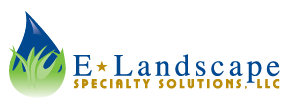Three Types of Green Roofs
 Green roofs aren’t a new concept, in fact they can trace their lineage in the United States back to the sod roofed homes that were common on the prairie during the country’s westward expansion. But green roofs in their modern incarnation date back to the 1960’s. Today, green roofs are divided into two broad categories, extensive and intensive, based on the pounds of vegetation per square foot, as well as the amount of maintenance they require.
Green roofs aren’t a new concept, in fact they can trace their lineage in the United States back to the sod roofed homes that were common on the prairie during the country’s westward expansion. But green roofs in their modern incarnation date back to the 1960’s. Today, green roofs are divided into two broad categories, extensive and intensive, based on the pounds of vegetation per square foot, as well as the amount of maintenance they require.
Extensive Versus Intensive Green Roofs
Extensive green roofs typically support 10-25 pounds of vegetation per square foot, and are designed to be largely self-sustaining and accessed only for periodic maintenance. This contrasts to intensive green roofs that typically support 80-150 pounds of vegetation per square foot, and are designed for the regular access required to maintain their more park like atmosphere. The differences in weight stems largely from the deeper soil depth required for intensive green roofs to support more complex and varied vegetation.
Comprehensive Green Roofs
There is also a third category, called comprehensive, only recently developed aimed at offering the varied options of an intensive green roof, but with lower load requirements more in line with extensive green roofs. As the technology continues to advance it is likely that more green roofs will be able to offer such advantages.
While green roofs can involve substantial upfront costs, with nationwide averages for extensive roofs running $10-23 per square foot and intensive roofs coming in anywhere from $33-220 per square foot, it is import to keep in mind that these are incredibly customized projects that will vary greatly based on the specifics of each site.
Benefits of a Green Roof
It’s also vital to factor in the potential benefits that a green roof has to offer. Beyond the obvious benefits of replacing previously lost green space, and assisting in storm water runoff management, green roofs reduce a building’s heating and cooling costs and mitigate noise pollution. Additionally, according to Penn State University’s Center for Green Roof Research, the lifespan of a green roof can be as much as three times that of a traditional roof.
Depending on your jurisdiction, it is also possible that a green roof will qualify you for tax incentives and assist in complying with local storm water runoff regulations. For those seeking the U.S. Green Building Council’s Leadership in Energy & Environmental Design (LEED) certification a green roof will earn you additional points.
Green roofs aren’t limited to new constructions. Depending on the specifics of your building it is often possible to replace an existing traditional roof with a green one. While a flat roof is best, anything up to a 30 degree pitch is a potential contender for an upgrade to a green roof. Is a green roof right for you?



